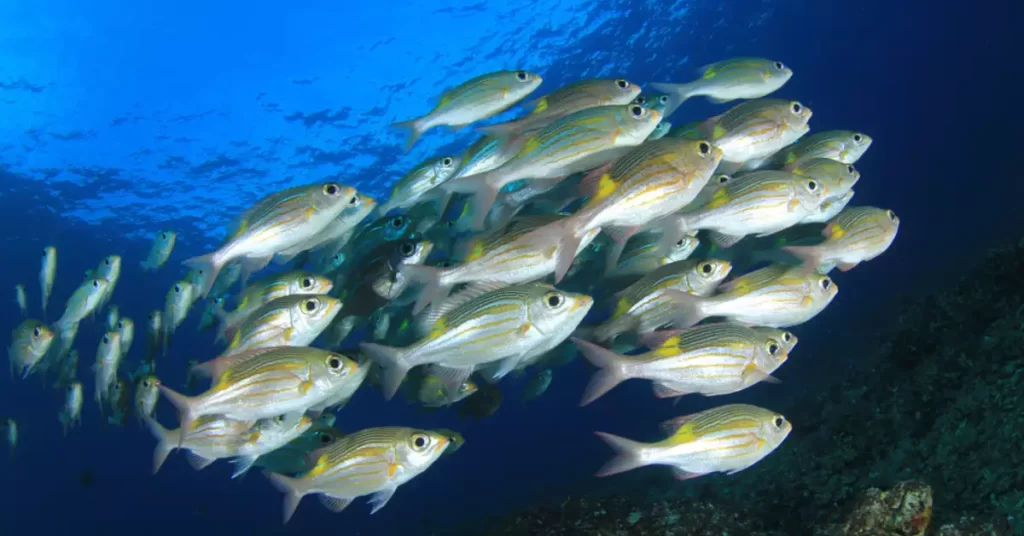When it comes to mysterious and entertaining party favors, nothing quite beats the magic of fortune-telling fish.
These curious creatures, made of thin and seemingly magical material, promise to reveal your fortune with just a simple touch.
But how do these enigmatic fish work their magic? In this article, we’ll dive into the science behind fortune-telling fish and unravel the secrets of their mystifying behavior.
So, get ready to explore the fascinating world of fortune-telling fish and uncover the truth behind their predictions.
The Origins of Fortune Telling Fish
A Brief History
Fortune-telling fish, also known as miracle fish or fortune fish, has been entertaining people for decades.
The fish first made their appearance in the early 20th century and quickly became a popular novelty item.
They were often used as party favors, promotional giveaways, or even as a simple and fun tool for fortune-telling.
What Are They Made Of?
The key to understanding how fortune-telling fish work lies in the unique material they’re made of.
The fish are made from a thin, flexible, and lightweight plastic called cellophane, a type of cellulose derivative.
This material is not only responsible for the fish’s ability to move but also plays a crucial role in its fortune-telling abilities.

The Science Behind Fortune Telling Fish
How Do They Move?
The movement of fortune-telling fish is a result of their reaction to moisture. When the cellophane comes into contact with moisture, such as the natural oils and perspiration on your skin, the fish begins to curl and move.
This is due to the cellophane’s hydrophilic properties, which cause it to absorb water and expand.
When the cellophane absorbs moisture, the different layers within the material expand at different rates, causing the fish to curl and twist.
The Role of Temperature
Temperature also plays a role in the behavior of fortune-telling fish.
As the temperature increases, the cellophane’s ability to absorb moisture increases, resulting in more pronounced movement.
Conversely, colder temperatures can cause the fish to become less responsive to moisture.
Interpreting the Fish’s Movements
The movements of the fortune-telling fish are believed to reveal your current emotional state or predict your future.
The fish’s packaging typically includes a guide that explains the meaning behind each type of movement. Here are some common interpretations:
- Head and tail curling: You are in love or experiencing strong emotions.
- Fish curling to one side: You are feeling indecisive or unsure about a situation.
- Fish curling into a ball: You have a fear or anxiety that needs to be addressed.
- Fish remains motionless: You are feeling calm and content.
While these interpretations may be entertaining, it’s important to remember that the fish’s movements are simply a result of the material’s reaction to moisture and temperature, rather than a true prediction of your future or emotional state.
Fun Ways to Use Fortune-Telling Fish
While the science behind fortune-telling fish may have demystified their magical abilities, they still provide endless entertainment for people of all ages. Here are some fun ways to use these fish:
- Party favors: Hand out fortune-telling fish at your next party or event for a unique and entertaining activity.
- Icebreakers: Use the fish as a conversation starter to help guests get to know each other.
- Educational tool: Teach children about the properties of cellophane and the science behind the fish’s movements.
FAQs
Are fortune-telling fish accurate?
While the fish’s movements can be entertaining and thought-provoking, they are not an accurate predictor of one’s future or emotional state.
What happens if my fish doesn’t move?
If your fish doesn’t move, it could be due to a lack of moisture on your hands or a colder temperature. You can try warming your hands or adding a small amount of moisture to see if the fish responds.
Can the fortune-telling fish be reused?
Yes, fortune-telling fish can be reused multiple times. However, after several uses, the cellophane may become less responsive due to wear and tear.
The Environmental Impact of Fortune-Telling Fish
The Use of Cellophane
While cellophane is a fascinating material with unique properties, it is important to consider its environmental impact.
Cellophane is derived from cellulose, a natural and renewable resource. However, the production process for cellophane requires the use of chemicals that can be harmful to the environment.
Additionally, cellophane is not biodegradable, meaning that discarded fish can contribute to plastic pollution.
Sustainable Alternatives
If you’re concerned about the environmental impact of fortune-telling fish, consider looking for sustainable alternatives or using the fish sparingly. Some eco-friendly options include:
- Paper fortune tellers: A classic childhood favorite, paper fortune tellers can be made from recycled paper and provide a fun, interactive experience.
- Digital fortune-telling apps: There are numerous apps available that offer digital fortune-telling experiences, allowing you to enjoy the fun of predicting the future without generating waste.
Conclusion
Fortune-telling fish may not hold the key to unlocking your future or revealing your deepest emotions, but they do offer a fascinating glimpse into the world of science and material properties.
By understanding the hydrophilic nature of cellophane and its reaction to moisture and temperature, we can appreciate the simple mechanics behind these entertaining novelty items.
While they may not possess magical abilities, fortune-telling fish can still provide hours of amusement and serve as an interesting conversation piece at parties or events. Just remember to consider the environmental impact of these fish and opt for sustainable alternatives when possible.